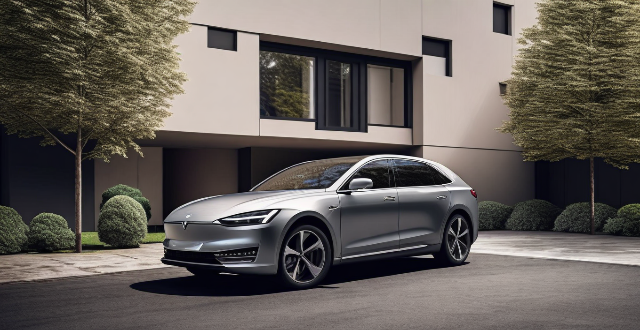Hybrid cars offer the fuel efficiency of electric vehicles and the range of gasoline-powered cars. Some hybrids can drive in electric mode under certain conditions, such as battery charge level and speed. Advantages include reduced emissions and a quieter driving experience, but there are also drawbacks like limited range and slower acceleration. Examples include the Toyota Prius and Honda Insight.

Can You Drive a Hybrid Car in Electric Mode Only?
Introduction
Hybrid cars are designed to offer the best of both worlds: the fuel efficiency of an electric car and the range of a traditional gasoline-powered vehicle. But can you drive a hybrid car in electric mode only? The answer is not as straightforward as you might think. Let's explore this question in detail.
What is a Hybrid Car?
A hybrid car combines an internal combustion engine (ICE) with an electric motor powered by batteries. The electric motor can power the car on its own, or it can assist the ICE to improve fuel efficiency and reduce emissions.
Electric Mode in Hybrid Cars
Some hybrid cars have a feature that allows them to operate in electric mode only, at least under certain conditions. This mode is often referred to as "EV mode" or "electric-only mode." When driving in this mode, the car relies solely on the electric motor for propulsion, and the ICE remains off.
Conditions for Electric Mode
The ability to drive in electric mode only depends on several factors:
- Battery Charge Level: The electric motor requires enough charge in the batteries to operate. If the batteries are depleted, the ICE will need to engage to recharge them or provide additional power.
- Speed and Load: Electric mode may be limited to lower speeds and lighter loads. As soon as you require more power, such as when accelerating or going uphill, the ICE will likely kick in.
- Temperature: In cold weather, the ICE may need to run periodically to warm up the cabin and maintain battery performance.
- Battery Management Systems: Some hybrids have sophisticated systems that manage battery usage to optimize efficiency and longevity, which may limit electric mode availability.
Advantages of Electric Mode
Driving in electric mode offers several advantages:
- Reduced Emissions: Since the ICE isn't running, there are no tailpipe emissions during electric-only operation.
- Quiet Driving Experience: Electric motors are much quieter than ICEs, providing a smooth and peaceful driving experience.
- Fuel Economy: Opting for electric mode can help save fuel, especially during short trips where the ICE might not be necessary.
Disadvantages of Electric Mode
However, there are also some potential drawbacks to consider:
- Limited Range: Electric mode typically has a shorter range compared to using both the electric motor and ICE together.
- Slower Acceleration: Without the assistance of the ICE, acceleration may be less powerful, affecting performance.
- Battery Depletion: If you rely solely on electric mode, you'll need to recharge the batteries regularly, either through regenerative braking or plugging in if your vehicle supports it.
Examples of Hybrid Cars with Electric Mode
Here are some examples of hybrid cars that offer an electric-only mode:
- Toyota Prius: The Prius has a mode called "EV Mode" that allows for electric-only driving under certain conditions.
- Honda Insight: The Insight includes a button that activates an "EV Mode," though it still may use the ICE occasionally.
- Chevrolet Volt: While technically an extended-range electric vehicle (EREV), the Volt can operate in electric mode until its battery depletes, after which the ICE kicks in to extend its range.
Conclusion
In conclusion, while it is possible to drive a hybrid car in electric mode only under specific circumstances, doing so comes with limitations and trade-offs. It's essential to understand how your particular hybrid vehicle operates and what conditions allow for electric-only driving to make the most of this feature without compromising your driving experience or safety.